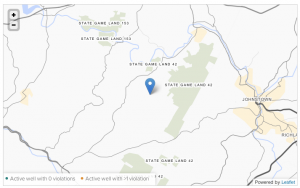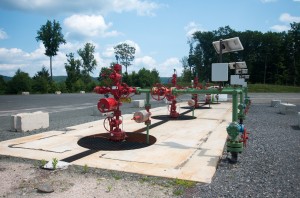Shale Play: About The Data

Visit our interactive news application — “Shale Play: Natural Gas Drilling in Pennsylvania.”” credit=”
* Note: This page was last updated in March 2015 and is no longer being updated.
To create this news application, StateImpact Pennsylvania acquired lists from the state Department of Environmental Protection — the agency charged with permitting and regulating oil-and-gas drilling in the Keystone State.
Until 2015, the agency released well data twice a year– in February and August. A new law now requires monthly reporting.*
The records in the application currently represent Marcellus Shale gas wells reported to the DEP for the second half of 2014. Gas production totals and days represent activity during that period. The application also reflects violations reported from January 2009 through March 2015 on any wells that were active during the second half of 2014.
The app used to track only producing (or “active”) wells. Recently, however, after realizing that several of the wells that were being drilled were not visible in our map, we changed that to also include the wells DEP had issued permits for but aren’t yet producing.

Joe Ulrich/WITF
This is what gas wells look like when they’re in production. This site in Lycoming County has four wells.
Keep in mind that 7,788 wells doesn’t mean there are 7,778 large drilling rigs dotting Pennsylvania. Energy companies drill multiple wells on each site.
After the well is drilled and hydraulically fractured, the workers and heavy equipment are gone– a well in production basically looks like a cleared gravel and concrete area with pipes.
The wells data are presented largely as released by the department, though we did omit a handful of duplicate records in which wells were assigned separate owners. The DEP also has a disclaimer on its site, noting that the well production data is a self-reporting system by gas companies. Although the department checks over the information, it is not formally audited.
The violations data are presented as released by the department, so some violations appear as duplicates because two enforcement actions can be associated with one violation in the department’s relational database. The agency, however, releases a flat dump from the database, so these duplicates are unavoidable. Be careful if you plan to use the data for well counts or fine totals without first separating inspections, violations and enforcements into separate tables with distinct records.
Please let us know if you spot errors or have questions.
Download the data yourself: click here for the well production data, and click here the violation data.
















